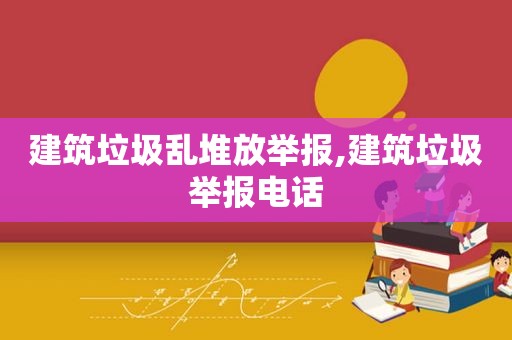本
文
摘
要

如需转载逆糖计划原创及专栏文章请开头标注完整来源。
黄豆炖猪蹄-营养美味豆香浓郁,香酥黑豆-香脆可口好味道,咸水花生-前菜零食两相宜,凉拌毛豆-清新爽口......
相信这些可爱的豆类佳肴也是大家的心头爱吧,这期的最TOP系列就给大家带来了10种最耀眼的豆类排行榜,一起来看看吧。
【太长不看版】:
最高综合逆糖指数:黑豆、毛豆、黄豆
低净碳水、低GI:黑豆、毛豆、黄豆
低GI:黑豆、鹰嘴豆
高膳食纤维:黑豆、海军豆、花生
摄入某些豆类有助于降低代谢综合征的危险因素
[注意]:对于碳水控制较严格的低碳水饮食人群、糖尿病患者或减肥人群须注意日常对豆类摄入量的把控。
豆类是植物蛋白质最丰富的来源。
它们不仅能提供优质的蛋白质,同时也富含了脂肪、膳食纤维和多元维生素及矿物质(如B族维生素、钙、磷、铁、锌等无机盐元素)。
对于素食主义者来说,豆类是补充蛋白质的重要食物来源,也是肉类的绝佳替代品。
再者,豆类也是优质碳水化合物的来源。
与其他复合碳水化合物(如全谷物)相比,某些豆类的碳水化合物含量相对比较少,因此对于低碳水饮食践行者、糖尿病患者及减肥人群都可以放心地食用。
不过,有些豆类含有较高的碳水,建议务必参考该食物的营养值,掌握好每日的摄入量,避免超出每日的碳水摄入量。(“逆糖食库”将是你的好帮手!)
此外,许多研究已证实豆类也具有许多健康益处,包括有助于降低心脑血管疾病风险、平稳血糖、及促进肠道健康的作用。
再加上高含蛋白质的它还能有效地维持长时间的饱腹感(也就是说,能减少饥饿感,降低食欲,减少每日的食物总摄入量)。
我们根据豆类的综合营养价值(包括净碳水、蛋白质及膳食纤维的含量)来挑选出了10种豆类中的佼佼者,每种豆类都各有各的益处!
以上的排名以净碳水含量从低到高来排列
黑豆有助于稳定餐后血糖水平(Winham et al., 2017)[1]
一项荟萃分析得出的结论是,每天食用47克的豆类蛋白质可使总胆固醇水平降低9.3%,LDL-胆固醇降低12.9%,VLDL-胆固醇降低2.6%,甘油三酯降低10.5%,而提高了HDL-胆固醇2.4% (Anderson et al., 1995)[6]
大豆摄入量与胃癌和结直肠癌的风险降低有关(Trock et al., 2006)[9]
一项针对超重和高胆固醇人群的研究发现,与小麦粉相比,每天食用50克豌豆粉长达28天能显著降低胰岛素抵抗和空腹胰岛素水平 (Marinangeli et al., 2011)[15]
一项研究显示,食用含有扁豆的番茄酱意大利面的人在用餐期间累积的食物摄入量明显减少,并且血糖水平低于对照组(没吃小扁豆)(Mollard et al., 2012)[17]
豆类既好吃,益处也多多,但是糖友们切忌贪多哦,下一期最TOP系列我们将给大家带来Omega3的好处。下期再见~
- end -
撰文:Yee Ling
编辑:Rocky
参考文献:
1. Winham, D.M., A.M. Hutchins, and S.V. Thompson, Glycemic Response to Black Beans and Chickpeas as Part of a Rice Meal: A Randomized Cross-Over Trial. Nutrients, 2017. 9(10).
2. Thompson, S.V., D.M. Winham, and A.M. Hutchins, Bean and rice meals reduce postprandial glycemic response in *** s with type 2 diabetes: a cross-over study. Nutr J, 2012. 11: p. 23.
3. Panlasigui, L.N., L.M. Panlilio, and J.C. Madrid, Glycaemic response in normal subjects to five different legumes commonly used in the Philippines. Int J Food Sci Nutr, 1995. 46(2): p. 155-60.
4. Lo, G.S., et al., Soy fiber improves lipid and carbohydrate metaboli *** in primary hyperlipidemic subjects. Atherosclerosis, 1986. 62(3): p. 239-48.
5. Anthony, M.S., T.B. Clarkson, and J.K. Williams, Effects of soy isoflavones on atherosclerosis: potential mechani *** s. Am J Clin Nutr, 1998. 68(6 Suppl): p. 1390s-1393s.
6. Anderson, J.W., B.M. Johnstone, and M.E. Cook-Newell, Meta- *** ysis of the effects of soy protein intake on serum lipids. N Engl J Med, 1995. 333(5): p. 276-82.
7. Sathyapalan, T., et al., The effect of soy phytoestrogen supplementation on thyroid status and cardiovascular risk markers in patients with subclinical hypothyroidi *** : a randomized, double-blind, crossover study. J Clin Endocrinol Metab, 2011. 96(5): p. 1442-9.
8. Lu, D., et al., Meta- *** ysis of Soy Consumption and Gastrointestinal Cancer Risk. Sci Rep, 2017. 7(1): p. 4048.
9. Trock, B.J., L. Hilakivi-Clarke, and R. Clarke, Meta- *** ysis of soy intake and breast cancer risk. J Natl Cancer Inst, 2006. 98(7): p. 459-71.
10. Dahl, W.J., et al., Increased stool frequency occurs when finely processed pea hull fiber is added to usual foods consumed by elderly residents in long-term care. J Am Diet Assoc, 2003. 103(9): p. 1199-202.
11. Swiatecka, D., et al., The study on the impact of glycated pea proteins on human intestinal bacteria. Int J Food Microbiol, 2011. 145(1): p. 267-72.
12. Sandstrom, B., L.T. Hansen, and A. Sorensen, Pea fiber lowers fasting and postprandial blood triglyceride concentrations in humans. J Nutr, 1994. 124(12): p. 2386-96.
13. Lunde, M.S., et al., Variations in postprandial blood glucose responses and satiety after intake of three types of bread. J Nutr Metab, 2011. 2011: p. 437587.
14. Seewi, G., et al., Effects on parameters of glucose homeostasis in healthy humans from ingestion of leguminous versus maize starches. Eur J Nutr, 1999. 38(4): p. 183-9.
15. Marinangeli, C.P. and P.J. Jones, Whole and fractionated yellow pea flours reduce fasting insulin and insulin resistance in hypercholesterolaemic and overweight human subjects. Br J Nutr, 2011. 105(1): p. 110-7.
16. Stephen, A.M., et al., Effect of green lentils on colonic function, nitrogen balance, and serum lipids in healthy human subjects. Am J Clin Nutr, 1995. 62(6): p. 1261-7.
17. Mollard, R.C., et al., The acute effects of a pulse-containing meal on glycaemic responses and measures of satiety and satiation within and at a later meal. Br J Nutr, 2012. 108(3): p. 509-17.
18. Aslani, Z., et al., Lentil Sprouts Effect On Serum Lipids of Overweight and Obese Patients with Type 2 Diabetes. Health Promot Perspect, 2015. 5(3): p. 215-24.
19. Becerra-Tomas, N., et al., Legume consumption is inversely associated with type 2 diabetes incidence in *** s: A prospective asses *** ent from the PREDIMED study. Clin Nutr, 2018. 37(3): p. 906-913.
20. Borresen, E.C., et al., A Pilot Randomized Controlled Clinical Trial to Assess Tolerance and Efficacy of Navy Bean and Rice Bran Supplementation for Lowering Cholesterol in Children. Glob Pediatr Health, 2017. 4: p. 2333794x17694231.
21. Mollard, R.C., et al., Regular consumption of pulses for 8 weeks reduces metabolic syndrome risk factors in overweight and obese *** s. Br J Nutr, 2012. 108 Suppl 1: p. S111-22.
22. Alper, C.M. and R.D. Mattes, Peanut consumption improves indices of cardiovascular disease risk in healthy *** s. J Am Coll Nutr, 2003. 22(2): p. 133-41.
23. Aune, D., et al., Nut consumption and risk of cardiovascular disease, total cancer, all-cause and cause-specific mortality: a systematic review and dose-response meta- *** ysis of prospective studies. BMC Med, 2016. 14(1): p. 207.
24. Celleno, L., et al., A Dietary supplement containing standardized Phaseolus vulgaris extract influences body composition of overweight men and women. Int J Med Sci, 2007. 4(1): p. 45-52.
25. Winham, D.M., A.M. Hutchins, and C.S. Johnston, Pinto bean consumption reduces biomarkers for heart disease risk. J Am Coll Nutr, 2007. 26(3): p. 243-9.
26. Finley, J.W., J.B. Burrell, and P.G. Reeves, Pinto bean consumption changes SCFA profiles in fecal fermentations, bacterial populations of the lower bowel, and lipid profiles in blood of humans. J Nutr, 2007. 137(11): p. 2391-8.
27. Hosseinpour-Niazi, S., et al., Substitution of red meat with legumes in the therapeutic lifestyle change diet based on dietary advice improves cardiometabolic risk factors in overweight type 2 diabetes patients: a cross-over randomized clinical trial. Eur J Clin Nutr, 2015. 69(5): p. 592-7.
28. Jukanti, A.K., et al., Nutritional quality and health benefits of chickpea (Cicer arietinum L.): a review. Br J Nutr, 2012. 108 Suppl 1: p. S11-26.
29. Augustin, L.S., et al., Post-prandial glucose and insulin responses of hummus alone or combined with a carbohydrate food: a dose-response study. Nutr J, 2016. 15: p. 13.
30. Pittaway, J.K., et al., Effects of a controlled diet supplemented with chickpeas on serum lipids, glucose tolerance, satiety and bowel function. J Am Coll Nutr, 2007. 26(4): p. 334-40.
31. Fernando, W.M., et al., Diets supplemented with chickpea or its main oligosaccharide component raffinose modify faecal microbial composition in healthy *** s. Benef Microbes, 2010. 1(2): p. 197-207.
【声明】本原创内容作为知识分享和信息交流,仅代表个人观点。由于每个人身体状况及患病情况存在差异,文章内容不可取代专业医疗建议。请大家根据自身健康状况理智作出选择。
看完就完事啦?
原创不易,觉得好看
记得点个赞再走哦~
如果觉得有用,
一键“转发”让更多人看到吧~


